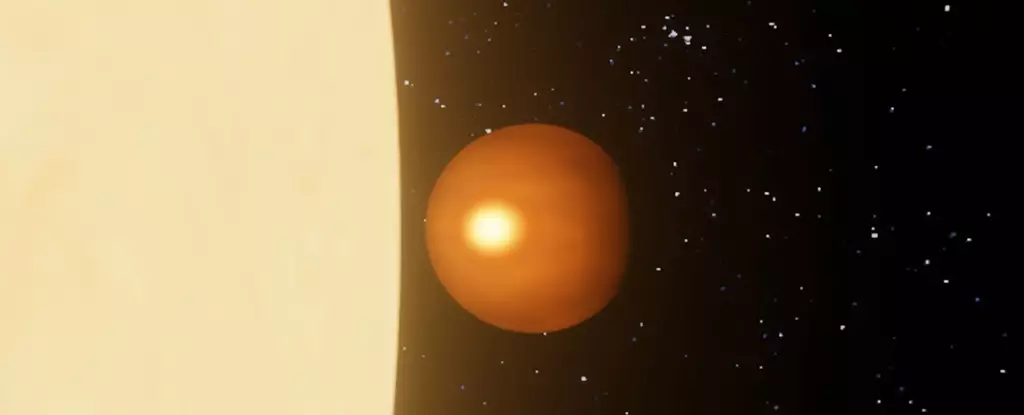Exoplanets have been a subject of fascination for astronomers and researchers for many years now. These alien worlds, orbiting stars beyond our Solar System, present a diverse range of environmental conditions. One such exoplanet, WASP-76b, has captured the attention of scientists due to its extreme nature. With a dayside temperature exceeding 2,000 degrees, WASP-76b is an ultra-hot gas giant that is 640 light years away from Earth in the constellation Pisces. This exoplanet completes one orbit in just 1.8 Earth days, being tidally locked to its host star, leading to intense winds encircling the planet.
Recent research has shed light on the bizarre atmosphere of WASP-76b, revealing the presence of intense iron winds. A team of astronomers, including researchers from the University of Geneva, published their findings in the journal Astronomy & Astrophysics. By focusing on the day-time side of the exoplanet, where temperatures soar, the team used the ESPRESSO spectrograph on the European Southern Observatory’s Very Large Telescope to study the visible light spectrum. This high-resolution emission spectroscopy technique allowed them to detect the chemical signature of iron in the atmosphere of WASP-76b, indicating a movement of iron atoms from lower to upper layers.
The study of exoplanet atmospheres, such as WASP-76b, provides valuable insights into the diverse range of environments present on these alien worlds. Gas giants like WASP-76b offer unique opportunities to study the climates of planets subjected to extreme levels of radiation from their host stars. The detection of iron winds on WASP-76b adds to our understanding of the mechanisms at play in the atmosphere of ultra-hot Jupiter worlds. Furthermore, the use of advanced telescopes and spectrographs enables researchers to decode the chemical composition of exoplanet atmospheres, contributing to our knowledge of these distant worlds.
The exploration of exoplanets like WASP-76b opens up a world of possibilities for astronomers and scientists. These alien worlds offer a glimpse into the diverse and often extreme conditions that exist beyond our Solar System. By studying the atmospheres of exoplanets, researchers can expand their understanding of planetary formation, evolution, and potential habitability. The discovery of iron winds on WASP-76b serves as a testament to the complexity and diversity of exoplanetary environments, highlighting the need for continued exploration and research in this fascinating field. As technology advances and detection techniques improve, we can expect to uncover even more secrets hidden within the atmospheres of these distant worlds.


Leave a Reply